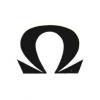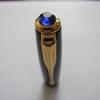I have wondered for several years why there seem to be more medium and borad nibbed P51 from Newhaven than from Janesville. Also why the medium nib from England seems broader than the US medium.
(Tom Mullane once estimated that about 80% of the US-made 51s head had seen had a fine point.)
The obvious answer -- a non-answer -- is that the UK market preferred broader nibs; the US market preferred fine nibs. Sure, Parker built what their local markets wanted.
Why did the US market want a fine nib, while the UK market wanted more medium and more broad nibs?
My best guess, as a former apprentice social historian, is that
- evidence might be found in comparing US and UK handwriting texts from the '20s - '50s. I don't have samples; this is one place I would start
- evidence might be in Parker company archives. Someone in marketing must have discussed this. While a marketeer might not know exactly why the UK preferred wider nibs, they might have had an explanation
- evidence might also be in etiquette books. Perhaps US books taught people that writing smaller characters signalled that the writing was a finer person...had more education, was more careful, came from a professional / managerial status or class
- I notice that there are plenty of Esterbrook 2668 and 9668 nibs, so part of the US market used a medium nib. Given the price (and advertising), I would guess that the '51 was intended as a gift pen for wealthier people than those who used Esterbrooks. Maybe a graduation pen for someone going on to college, or a college graduation pen, or a doctor/lawyer/business manager's pen
- After 1955 or 1960, Parker seemed to offer more medium nibs, especially in the Parker 45 line...a model intended for schools.
Those are guesses. Does anyone have evidence?















